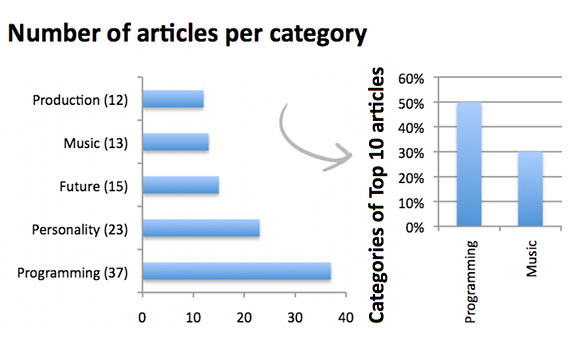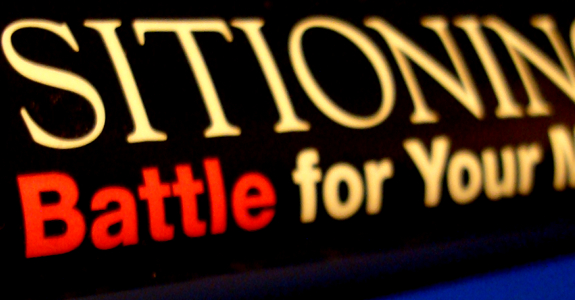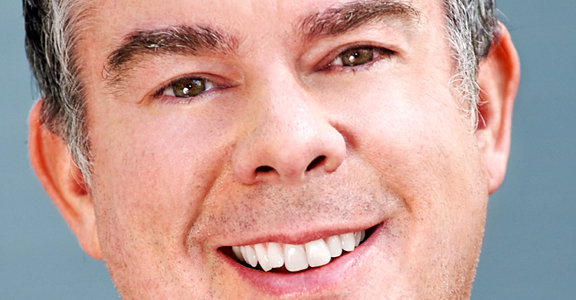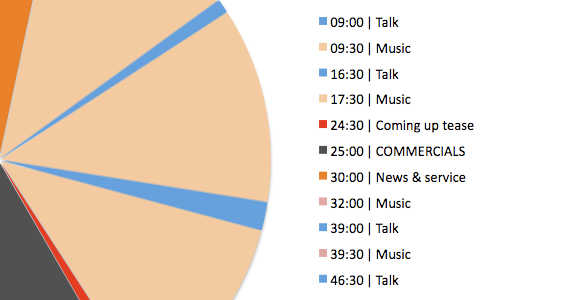In July 2013, we published our 100th post. These are the 10 most popular ones of 2 years Radio))) ILOVEIT, based on the preference of 45.000 visitors we had until then.
It seems like yesterday that I’ve pressed ‘Publish’ for the first time to post an interview with Valerie Geller, Radio Is The Last Magic. Fast forward 2 years, we have got 100 articles about radio programming, radio production, personality radio, music scheduling and the future of radio online, a cool crowd of readers, followers & subscribers, and exciting plans!
45.000 unique visitors
have found this site over the first 2 years

During the first 2 years, over 45.000 unique visitors viewed 128.000 pages on Radio))) ILOVEIT, with an all-time high of more than 6.000 visits and 11.000 pageviews in April 2013 (data: Google Analytics, image: Thomas Giger)
Make a positive difference
Since the beginning, we do focus on quality (rather than quantity). There are many excellent radio industry sites out there, but they usually offer a wide range and are mostly covering the day-to-day industry news, and sometimes even include TV or music industry news as well. I was missing a focused radio website with in-depth content about topics that I’m interested in (and find important for successful radio), so I decided to one myself. That’s the site you’re reading now, along with other radio professionals from all over the world!
 Follow your own path
Follow your own path
I’ve learned that it works to create a concept you believe in and stick to it. This site is very different from many other radio sites. Where others do 200-word news updates talking about who, what, when and where, we publish 2000-word background stories (looking for the why and how) and also make this content as timeless as possible. Despite humble beginnings – June 2011 showed a whopping 25 visitors – I didn’t deviate from the plan.
Keep on keeping on
Investing 1 day (and often more) in a single post, to make it as perfect as possible, means you need to be dedicated and disciplined all the time. I believe that making a positive difference today is the only way to enjoy lasting success tomorrow, so I’m really in it for the long term (a principle that, I think, also applies to the radio business). In June 2012, we had about 2400 visitors/month (almost 100 times more than at the start) and in June ‘13 we attracted almost 5400 people who together viewed close to 11.000 pages. Interestingly enough, we already hit the peak within that 2-year period a few months earlier (April 2013, with 6000 visits). Together, over 45.000 unique visitors have found this site during its first 2 years.
Radio programming and personality radio
are leading topics

Left: 60% of the first 100 articles is covering radio programming and personality radio topics, right: 5 of the 10 most popular stories are about radio programming while music scheduling is second with 3 posts (image: Thomas Giger)
Top 10 of 100
The combination of our second birthday and reaching the 100-post milestone is a good time to look at the story so far. A category analysis shows that radio programming and personality radio are leading topics throughout the entire site. There’s a fair amount of articles on radio production, music scheduling, and the future of radio as well. Looking at the 10 most popular articles (based on the first 100 posts), we see that while radio programming is the winner, music scheduling takes the second place this time. Now, here’s the list of our Top 10 articles so far:

Radio is evolving from broadcasting & crowdcasting to narrowcasting & cloudcasting (image: unknown sources)
10. The Future Of Radio: Moving From Crowd To Cloud
Guess what has been the world’s first social medium ever? It ain’t Facebook! You’ve guessed it right; it’s radio. No wonder that radio and social media combine very well. But there’s also a move towards multimedia franchises and online platforms that is relevant for radio. In this mini essay, we’ll discuss why the switch from broadcasting to cloudcasting (and other developments) make it necessary for the radio industry to build its own multimedia assets, and not just depend on external media platforms. Read more

Format clocks create balance between song categories in a radio station’s music playlist (image: Thomas Giger)
9. How To Create The Best Radio Music Format Clocks
This post began with a question from a music director who emailed me. I have always loved to think through radio programming strategies and to create music format clocks, and read quite a lot about it. As I had so much to say about this topic, it would have been a very long reply :-) and in addition, I figured that other radio programmers might have similar challenges with their music scheduling. So I decided to write my answer in a blog post. It triggered a whole thread of comments. Read more

Radio promotions have short-term (attention, ratings) and long-term (branding, images) effects (photo: 89.0 RTL)
8. Radio Promotions: The Naked Truth
Radio conferences are good to freshen up existing knowledge and get some new inspiration. I like to share impressions of radio events that I’ve been to with you, hoping it give you some inspiration for things you can use at your own station. Ideas for radio promotions are always useful for creating brand awareness and making ratings impact! This article features ideas for 360° promotions and station benchmarks, and discusses the importance of keeping in your long-term image in mind. Read more

Radio people can learn from the principles of positioning brands and marketing products (photo: Thomas Giger)
7. Radio Station Brand Positioning: Existing Perception Is Reality
Creating a successful radio brand is about more than just having a great product. It should also be distributed and promoted in the right way. Positioning plays a major part in the process of marketing, as your brand image – how people perceive you – matters even more than the actual truth! After reading a marketing classic by Al Ries and Jack Trout, I thought of translating some of their advertising principles to radio. Why it’s important to say what you are – or say what you’re not – and how to do it. Read more

Radio stations were an important companion of radio listeners in New York during and after 9/11 (photo: Wikipedia)
6. 9/11: Radio Stations Connecting People
It’s rare for me to write about (radio) news events, as this site is focused on timeless content. This time, I tried to combine both: the 10-year memorial of September 11, 2011 triggered a search for New York radio stations coverage on 9/11, including how radio personalities such as Elvis Duran and Howard Stern dealt with it on the air. Duran actually thought of leaving the radio industry just before the terrorist attacks – it actually was 9/11 that held him back, as he realized how much listeners depend on radio. Read more

Z100 morning show host Elvis Duran speaks about his long radio career and digital innovation (photo: Z100)
5. Interview Elvis Duran: “I’m Just Into My Own Thing”
I had the pleasure of meeting Elvis during a radio event in the UK where he was a guest speaker, and talk with him for half an hour. About 10 minutes into it, I noticed that my recorder was not… recording. The interviewer’s nightmare! Thank God, we still had about 20 minutes to go, and spoke about how he’s influenced Ryan Seacrest’s career, who his own role models have been, why radio personalities need management backup, and how audience relationships evolve through multiple channels. Read more

What listeners expect on a station next is far more important than what it’s airing right now (photo: PicsToPin)
4. Listener Expectations Influence Ratings
As said in the before-mentioned article on radio station brand positioning, the reality is actually what the audience thinks it is – and it’s hard to change someone’s mind once he’s made it up. In this post, we explain an essential radio programming principle: say what you do, and do what you say. Consistently teach your listeners what they can expect from you (which goes further than positioning statements), and consistently fulfill your promise so you’ll reward them at every tune-in occasion. Read more

From J.Lo classic to Nickelback hit: a good Modern AC format has a consistent variety flow (photo: Gossip Queen)
3. Music Scheduling Strategies: Create Consistent Flow
Consistency is also fundamental for music formats, for the same reason of subliminally educating your audience. Listener expectations are easier to establish when the building blocks of your format clock are easy to subconsciously remember. If your music director knows his job, you can sound highly recognizable without ever being predictable, because the music rotations are perfect. Based on a Modern AC case study, we’ll show you how to create more format consistency. Read more

Behind perfect song rotations and music playlists are easy mathematical scheduling rules (photo: HD Wallpapers)
2. Music Scheduling: Song Rotation Rocket Science
Because song rotations play a major part in music scheduling, we tried to explain some fundamentals. It all begins with category exposure: how many song categories do you have, how often do they appear in your format clock and how many songs does each category include? (Plus, of course, artist separations, daypart restrictions, and other breakable or unbreakable music scheduling rules you’ve set.) We’ll also discuss the even-odd rule, daypart rotations, clock shuffeling, and much more. Read more

As they’re interrupting the flow, radio commercial breaks have to be scheduled carefully (image: Thomas Giger)
1. How To Program Radio Commercial Breaks Strategically
Commercials… you can’t live with them; can’t live without them. Considering the amount of hits on this page, it looks like programming and sales are natural enemies for good reason. How to deal with spot breaks that kill your program flow? When research indicated that commercial breaks swap listeners, we thought of where to schedule spot breaks (for non-PPM markets) in a strategic way, including how to make people ‘sit it out’ for a longer time and counter-program your competitor’s ads. Read more
The next 100 posts
Looking at this Top 10, it seems to me like ‘how to’ tutorials are even more appreciated than event reports. Just 1 of the 10 most popular articles is a write-up of a panel session; the one on radio promotions. My goal for the next 100 posts is to give you even more great value, with a clear focus on resource pages and background articles. Produced with great passion, and motivated by your visits, follows, sign-ups and positive comments. The objective is to turn this site into the place for inspiration & resources for radio professionals all over the world. Ambitious? Definitely. Possible? Absolutely. But only with your support, so THANK YOU!






Congratulations Thomas!
We know: compelling content wins :)
Keep on this precious work!
Kind regards,
Antal
Congratulations on your 100th article!
I would just like to voice my appreciation for all the valuable content this team have made available to us all. I sure have learned a lot, and I know that I am not the only one benefiting from this.
So thank you, and I look forward to the next 100 posts!
Regards,
Gerrit